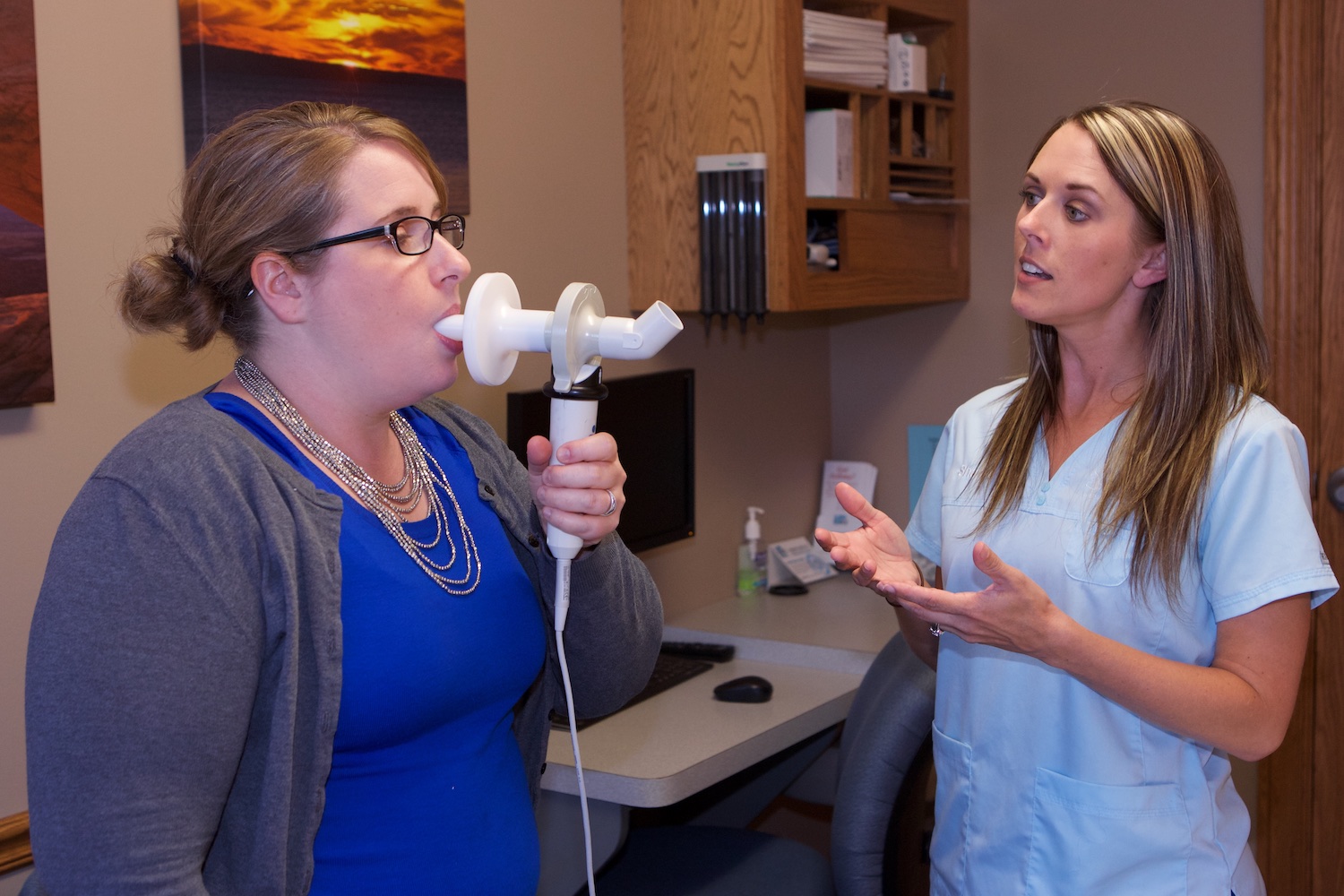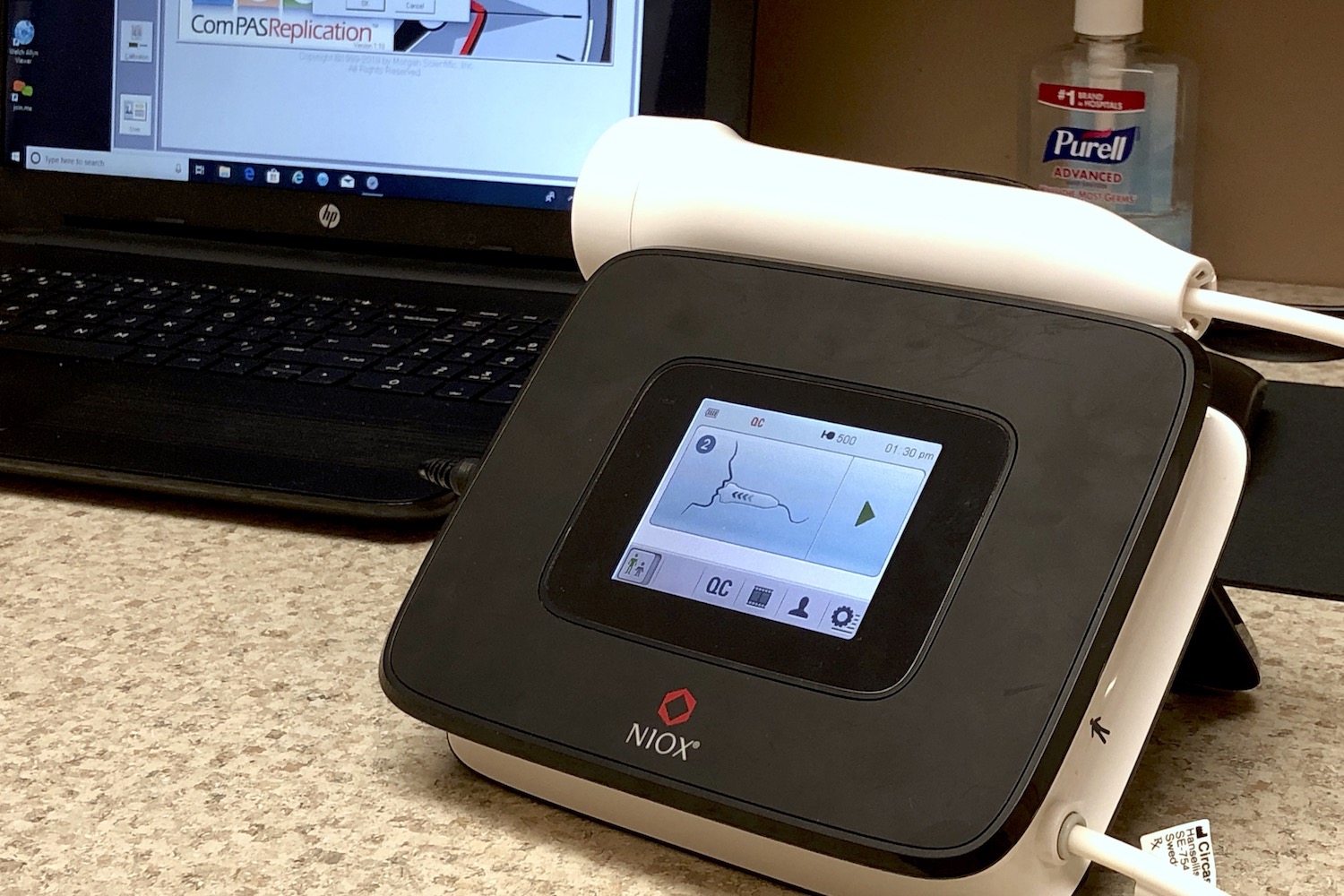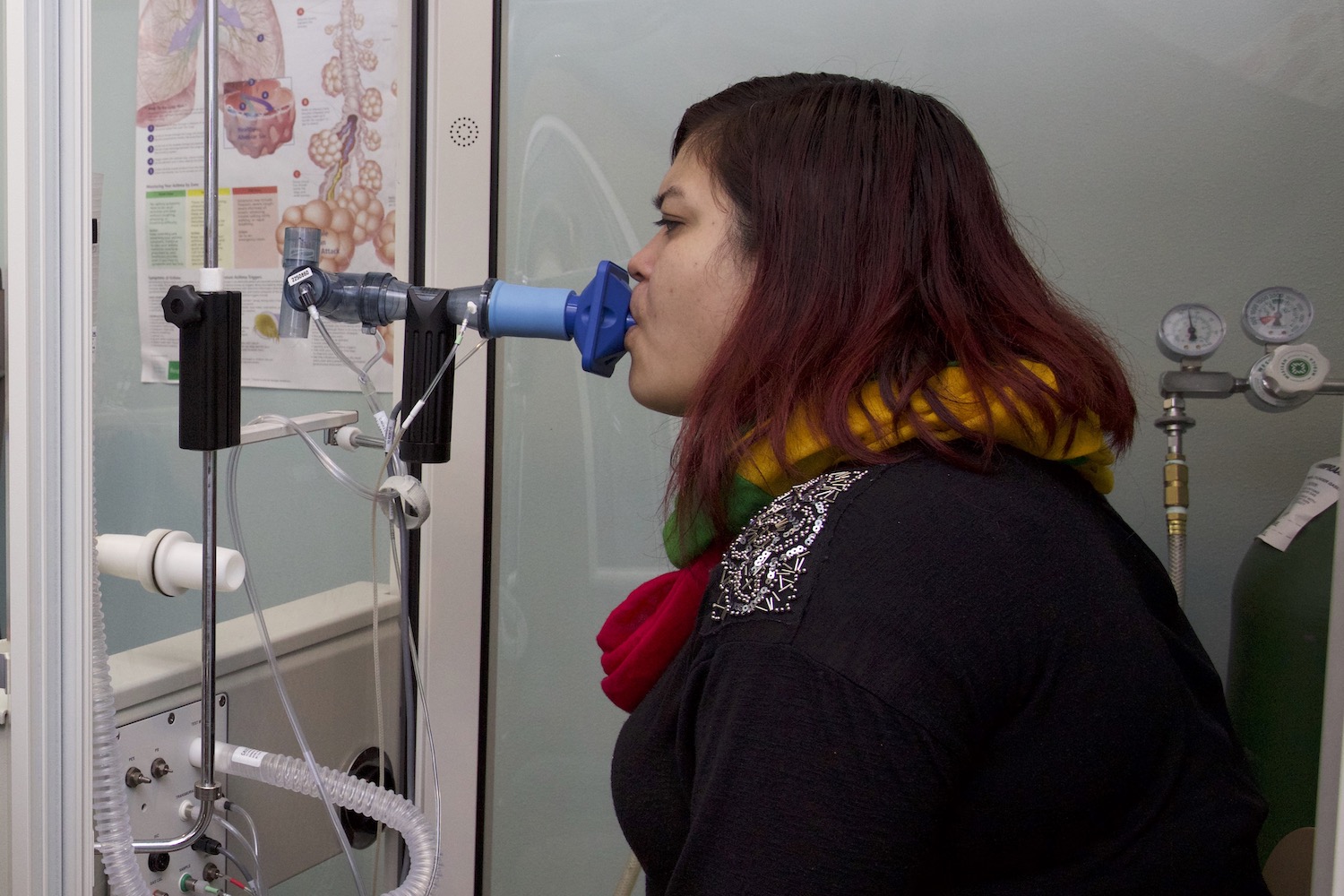

Exhaled Nitric Oxide: Nitric oxide is produced when there is allergic inflammation in the lungs. This test is most commonly used to help make the diagnosis of asthma as opposed to other lung problems that don’t result in an increase in nitric oxide production, such as COPD and non-asthmatic chronic cough. Since inflammation is an indication of asthma, the results of this test can determine whether steroids will be an appropriate treatment. It also helps us decide whether you might benefit from increased medication dosage if your lung function still isn’t normal after completing your initial treatment plan.


Body Plethysmography: Although it requires more sophisticated equipment and more time to complete the various evaluations, plethysmography is an advanced form of lung function testing that gives us a lot of information. We can not only see how well the lungs work, but also how well they work in conjunction with the chest wall, or how much lung tissue destruction may have resulted from cigarette smoking, working in polluted environments, or from other causes. It helps find out whether someone has asthma, COPD, or elements of both, and is most useful at helping us figure out right from the start what treatment option will work best, rather than take the standard of care trial and error medication approach.
